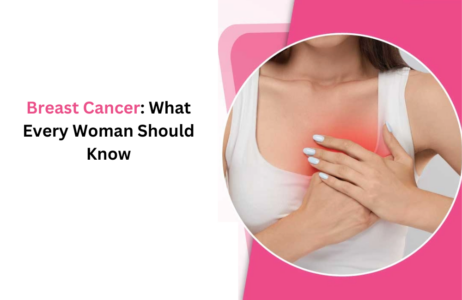Concerning the health of breasts being aware and detecting early are crucial. The majority of types of breast cancer can be discovered by women who notice signs of breast cancer before any formal diagnosis of cancer. Knowing how to examine your breasts regularly can make an enormous difference in catching possible issues in the early stages, which allows the prompt intervention of a medical professional. Breast Cancer includes early detection and treatment options, while medications help treat cancer effectively. Consult your doctor before using Mamofen for therapy.
Why Regular Breast Checks Matter
Breast cancer is among the most frequent cancers affecting females in the UK While it can affect men too however the risk is greater for women. The sooner you detect it, the better chance of a successful treatment and improved results. When you make breast self-examinations a part of your routine you are taking an active part in your overall health and well-being.
When and How Often Should You Check Your Breasts?
It is suggested to examine your breasts every month, but ideally just at least a few days following your period when they’re less swollen and tender. For women who don’t have menstrual cycles, picking the same date every month will help you maintain an established routine. It is key to early detection, while proper treatment helps manage breast cancer effectively. Consult your doctor before using Docel for treatment.
How to Check Your Breasts
1. Look in the Mirror
Place yourself in the mirror with your shoulders erect and hands on your hips. Check for any changes in shape, size or symmetry. Look for any dimpling or puckering in the skin’s texture.
2. Raise Your Arms
Move your arms up above your head, and then look for similar changes. This will help you spot any anomalies that may not be apparent otherwise.
3. Examine Your Nipples
Verify that your nipples are altered in their appearance or appear upside down when they previously weren’t, or have any unusual discharges including clear fluid or blood.
4. Feel Your Breasts While Standing or Sitting
With the other hand, you can feel your breasts with finger pads. Make a circular motion and cover the breasts completely from the collarbone to the upper part of your abdomen, and from the armpit up to the center of your chest. Feel your breasts while standing or sitting to check for any unusual changes, as early detection helps treat breast cancer effectively. Consult your doctor for guidance on Atraz medication.
5. Check While Lying Down
The position of lying down helps your breast tissue to expand more evenly. Continue the motion in a circular fashion applying medium, light as well as firm pressure, to experience the more dense tissues.
What to Look For
Although signs of breast cancer may not always mean cancer, it is important to be aware of what to look for.
- Thickening or clumps that feel distinct from the tissue around it.
- A numbness that is not explained in the armpit or breast
- Swelling of your breast, or beneatharm
- The appearance of rashes, redness or changes to the texture of the skin
- Nipple changes like discharge or inversion
If you experience one of the changes mentioned above, schedule appointments with your GP immediately if you are able to. They might refer you to further tests, such as mammograms, ultrasounds or biopsies to determine if you have the diagnosis of cancer..
What Happens After a Cancer Diagnosis?
When your physician suspects that you have breast cancer or breast cancer, they’ll run further tests to confirm the diagnosis. Breast cancer in the early stages has a high chance of survival due to the advancements in treatment options, which include chemotherapy, surgery, as well as radiation.
Reducing Your Risk
While certain risk factors, including genetics and age, can’t be altered, an active lifestyle can reduce the risk of developing breast cancer
- Eat a balanced, balanced diet that is with plenty of fruits and vegetables
- Keep exercising regularly to keep your weight in check.
- Limit alcohol consumption
- Do not smoke
- If you can, consider breastfeeding since it’s been linked with an increased chance of developing breast cancer.
Final Thoughts
Being aware of how to examine the condition of your breasts is an easy but effective way to be in control for your own health. The early detection of breast cancer can be the catalyst for earlier intervention, greatly improving the outcomes of your treatment. When you observe any strange changes, seek advice from a doctor immediately. Keep in mind that awareness and action are the key to beating breast cancer.











